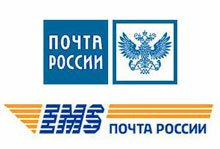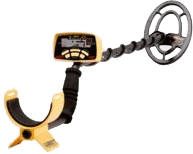|
 |
каталог | инструкции | публикации | тесты и обзоры |  |
| • |
Поиск старины в лесу, не по войне. Как вы считаете, можно ли в лесу старину найти?))) поля выбиты, а вот лес думаю местами девственный есть. Копал ли кто и каковы перспективы,Ваше мнение... |
|
| • |
Около реки, что может быть? Есть место на большом поле. размером примерно 50 на 50 метров. этот квадрат расположен на возвышенности недалеко от небольшой реки. до нее метров 100-130 +/- в половодье на этом пяточке всегда сухо ... Вот в чем вопрос что могло быть на этом месте? |
|
| • |
Как найти 3 кг серебра? отыскать своё, хорошо упрятанное. Поиском никогда не занимался, теперь приспичило. Не могу отыскать примерно 3-4кг серебра(техническое) зарытого лет 10 назад в лесополосе. Ориентиры утрачены из-за вырубки просеки. Глубина залегания - 20-40см. Посовеутуйте, пожалуйста, относительно недорогой прибор для разового поиска этого клада. |
|

• Так вот, металлоискатель мощнее на порядок, а вот находок не считая пуговицы ручной работы (не штамповка) Ноль. ИЛи искал очень тщательно в прошлый раз) неделю или дествительно ВСЁ.
• Отсюда вывод надо брать какой нибудь металлоискатель гаррет 250. Наиграшся и бросишь, так хоть денег не так жалко, а дорогой покупать металлоискатель не нужно мое мнение.
|
Инструкции
|
Про поисковые катушки еще раз(английский оригинал см. ниже) Большинство катушек имеют круглую форму, но некоторые выполнены в виде эллипса. Это относится к форме, а не к конструкции катушки. В общем и целом, эллиптические катушки обеспечивают больший захват исследуемой площади, и дают более четкий сигнал от цели в режиме Pinpoint. Круглые катушки легче и дешевле в плане их производства. Именно поэтому они более широко распространены. Катушки DD в основном предназначены для поисков предметов старины и для профессиональных золотоискателей. Концентрические катушки в основном используются для поисков современных монет в районах с большим содержанием железного и алюминиевого мусора в земле. Большинство стандартных концентрических поисковых катушек выпускаются диаметром 8 дюймов (20 см), в случае концентрической катушки, и примерно 10 дюймов (25 см) в длину, в случае эллиптической катушки. Данная статья дает сведения относительно наиболее распространенных типов катушек. Некоторые специальные поисковые катушки отличаются от описанных выше. Дэвид Джонсон, главный конструктор. В добавление к сказанному; Таблица 1. Основные типы поисковых катушек металлоискателей.
* * * * * * * * * * ABOUT SEARCHCOILS * * * * * * * Most searchcoils are round but some are elliptical. This refers to the overall shape, not to the type of coil construction. In general, elliptical coils provide a broader sweep pattern over the ground, and narrower target response for better pinpointing. Round coils are easier to design and less expensive to manufacture, which is why they're the most common. "Concentric" and "DD" (or "double-D") refers to the type of coil construction. A concentric searchcoil has a large transmitter coil, and a smaller receiver coil, centered on the same axis normal to the plane of the coils. Double-D's comprise two overlapping D-shaped coils of approximately the same size, one the transmitter and the other the receiver. Most searchcoils (whether round or elliptical) are of concentric construction. This coil arrangement is relatively easy to manufacture and its radial symmetry helps to minimize electrical drift due to time and temperature. It also provides good discrimination on shallow targets. Some searchcoils (whether round or elliptical) are of DD construction. The advantages of the DD are greater depth in mineralized soil, a broad sweep pattern, and narrow target response. Its primary disadvantage from a user's point of view is multiple responses on shallow targets and poor discrimination of flat iron objects. Designing them is much more difficult because their lack of radial symmetry makes them prone to drift which the design must minimize. Manufacturing cost is higher because the coils cannot be wound on high-speed winding equipment. The least expensive metal detectors usually come equipped with a round concentric searchcoil. The more expensive recent models often come equipped with an elliptical and/or DD searchcoil. Older models, even expensive ones, frequently don't have a DD searchcoil available because DD's fell out of favor during the 1980's and 1990's as the knowledge of how to make DD's did not advance fast enough to keep up with the demands of higher performance circuit designs. Nowadays there seems to be a trend toward DD's as manufacturers have gained more confidence in their ability to design and make them. Double-D's are usually preferred for relic hunting and gold prospecting. Concentrics are usually preferred when searching for modern coins in an area where there is also iron and aluminum trash. Most standard searchcoils are approximately 8 inches (20 cm) in diameter if round, or approximately 10 inches (25 cm) in length if elliptical. Larger searchcoils allow covering more area with each sweep, and offer a slight increase in depth on medium and large size targets. Unfortunately they are heavier, tend to lose small targets, and provide poor target separation. Small searchcoils provide better target separation (important in trashy areas) and ability to detect smaller targets (important in gold prospecting). They usually go nearly as deep as a standard size searchcoil. This essay pertains to the most popular types of searchcoils. Some specialty searchcoils are of types other than those described above. David Johnson |
ХИТЫ ПРОДАЖ
|








